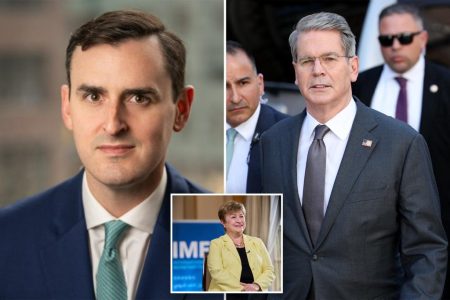A potential hurricane named Rafael is forecasted to form in the Caribbean, bringing heavy rain and mudslides to Cuba before moving towards the Gulf of Mexico, according to the US National Weather Service. The storm is expected to strengthen into a hurricane as it approaches Jamaica and could impact the Florida Keys and parts of the southeastern US with heavy rainfall later in the week. Jamaica and Cuba could see up to 230mm (9 inches) of rain, potentially leading to flooding. The government of Cuba has issued a Hurricane Watch for Havana and eastern provinces, including Pinar del Rio and Matanzas. This storm could worsen the energy crisis in Cuba, which has been experiencing power outages due to infrastructure issues and fuel shortages following Hurricane Oscar.
The new weather system, initially a tropical depression, was located south of Kingston, Jamaica, with sustained winds of 55km/h (35mph) moving north at 15km/h (9mph). It is expected to reach hurricane strength before reaching western Cuba late Tuesday or early Wednesday. Forecasters predict it will pass west of Florida, and adverse conditions should prevent it from becoming a life-threatening weather system as it approaches the US coast over the Gulf of Mexico. This hurricane season has witnessed above-average activity with 10 hurricanes and two major ones, Helene and Milton, causing destruction and fatalities in Florida and North Carolina. Only seven seasons in recorded history have had 11 Atlantic hurricanes by early November, according to meteorologist Philip Klotzbach.
Michael Lowry, a hurricane specialist in Miami, noted that despite the above-average activity this hurricane season, only four hurricanes have been recorded in the Gulf of Mexico in November since 1966, making a late-season hurricane there a rare event. Tropical Storm Rafael is projected to become the 11th hurricane of the 2024 Atlantic season, joining the previous storms that have caused significant damage and loss of life in the region. The potential impact of the storm on Cuba, particularly on already strained infrastructure and energy resources, is a cause for concern as authorities prepare for its arrival. The National Hurricane Center in Miami is closely monitoring the storm’s trajectory and providing updates to residents in the affected areas.
The formation of Tropical Storm Rafael presents a threat to countries in the Caribbean and the southeastern US, with potential for heavy rainfall, flooding, and mudslides. With Cuba already facing an energy crisis, the impact of this storm could further exacerbate the situation as residents grapple with power outages and limited resources. Forecasters are predicting the storm to strengthen into a hurricane as it moves towards the Gulf of Mexico, though adverse atmospheric conditions may prevent it from becoming a major threat to the US coast. The 2024 hurricane season has already seen high activity, with several hurricanes and major storms causing extensive damage and loss of life in the region.
The potential development of Hurricane Rafael highlights the ongoing challenges faced by countries in the Caribbean and the southeastern US during an active hurricane season. With the storm expected to bring heavy rainfall and strong winds to Cuba and surrounding areas, authorities are taking precautions to minimize the impact on vulnerable communities. The National Hurricane Center and meteorologists continue to track the storm’s progress and provide updates to residents in the affected regions. The formation of the 11th hurricane of the 2024 season underscores the need for preparedness and resilience in the face of natural disasters, as communities work to mitigate the impact of these powerful storms and protect lives and property.













